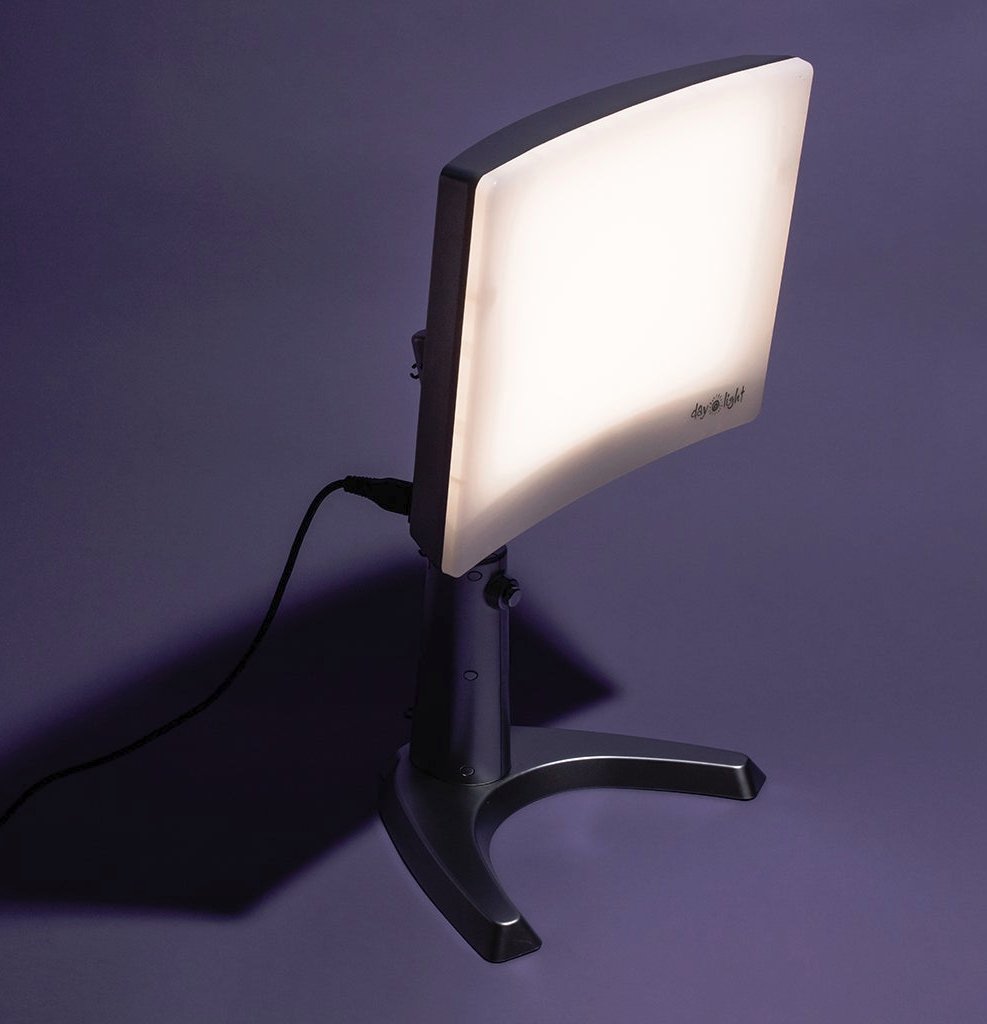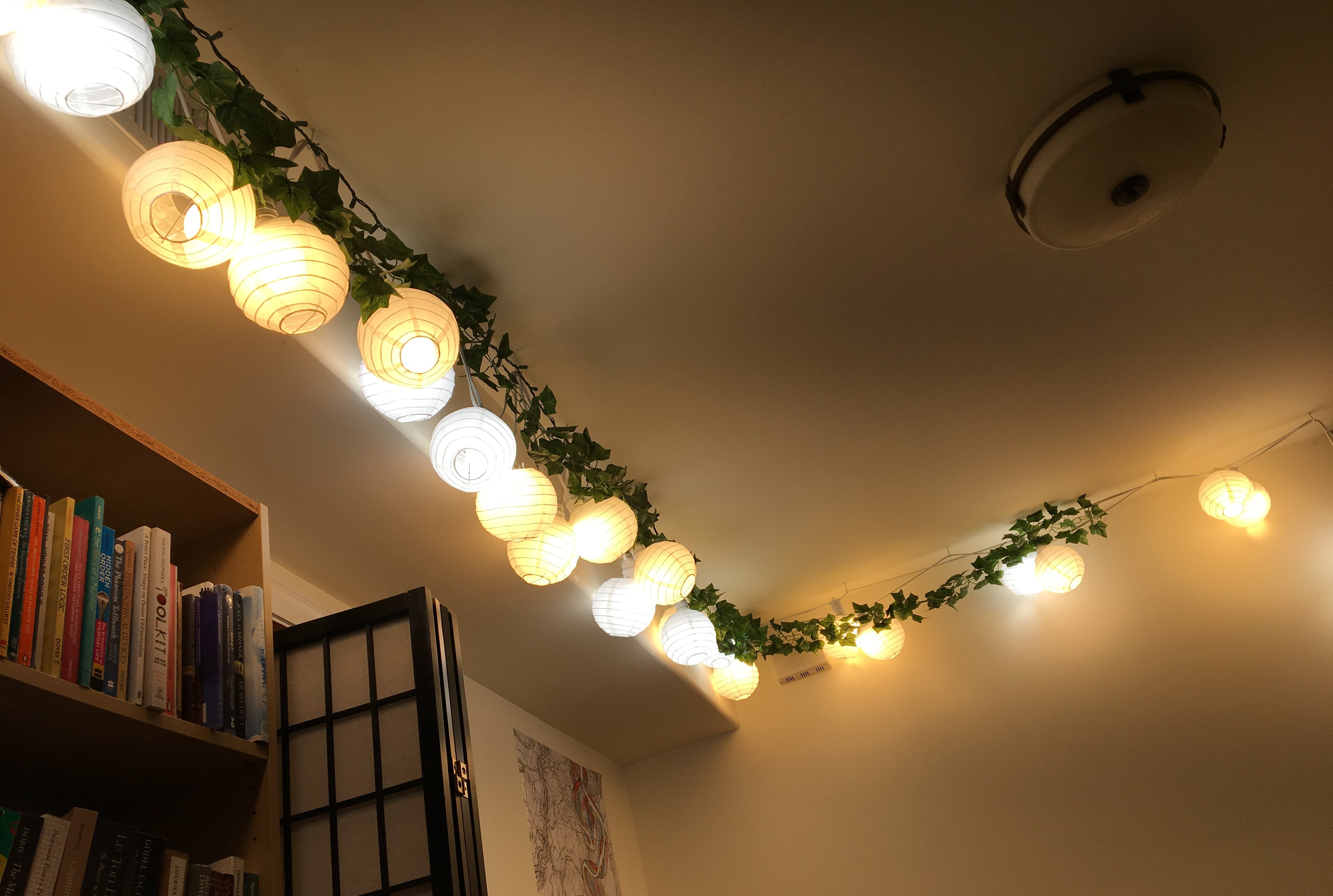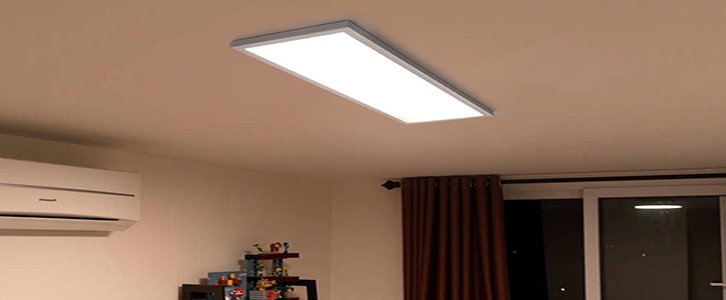A new option for building lumenators
post by Alex_Altair · 2021-07-12T23:45:34.294Z · LW · GW · 6 commentsContents
7 comments
For background on lumenators:
- https://meaningness.com/sad-light-led-lux
- https://arbital.com/p/lumenators/
- How to Build a Lumenator [LW · GW]
The original attempt at a lumenator is a commercial product called a "therapy lamp", but the ones I'd seen in the past were quite unambitious things; they're bulky, table-top, ugly, and not actually very bright. The idea is that you have them very close to you while you work at a desk, so that much of the light will be going into your eyes; that way you don't need a lot of total lumens to light up the whole room. Here are some examples:
- https://www.amazon.com/Sunlight-Adjustable-Brightness-Temperature-Travelling/dp/B08P3LLWJG/
- https://www.amazon.com/Carex-Day-Light-Classic-Bright-Therapy/dp/B00PCN4UVU/
- https://www.amazon.com/dp/B000W8Y7FY/

Rationalists haven't found these satisfying, so we typically buy a ton of high-lumen bulbs and string them up around the ceiling of the room. But having bare bulbs around is pretty unpleasant to look at, both because they're ugly and because it's too much light in a small point of your vision. So most people put something in front of or around each bulb to diffuse the light over a larger area. Unfortunately though, this modification tends to also absorb a huge fraction of the light (subjective response is not linear in lumens so it's hard to tell). This kind of defeats the whole point of the lumenator!

A couple years ago, my friend Blake Jones sent me a video where a guy shows you how you can build a very satisfying light source using a broken panel TV or monitor. Essentially, you strip everything from the monitor except the structural frame, the Fresnel lens, and the diffuser. These components are professionally designed to spread out the lighting source perfectly evenly across the panel while minimizing light absorption. You can then put inexpensive, bright LED strips along the inside edges of the frame, and the lens and diffuser will redirect the light and make it come out perpendicularly outward from the panel. (This is in contrast to bulbs, which are optimized to shed the light radially.) With a panel form factor, you could attach it to your ceiling, and it would look quite a bit like having a skylight; flat, downward light, and very bright while being spread across enough area to not be too bright to look at. This is a way more attractive option, but despite the fact that building them yourself is relatively cheap and easy, it's still a project. It took Blake and I a few hours to each make one.
But apparently, the market has caught onto this possibility, and now produces these lights commercially! I saw one from Alex Turner [LW · GW], and the light from it looks just like the one I made, only with a much nicer frame. They're also sold under the term "therapy lamp", and I presume they will entirely replace the aforementioned style. On Amazon they all seem to say "10,000 lux" which is frustrating; any light bulb can be 10,000 lux if you put it next to your eyeball. What we really need to know is the total lumens. The product descriptions don't say what surface area that lux refers to; perhaps it means the surface of the light panel. If that's the case then they seem to have similar total output lumens to a light bulb. At $20-$40, the cost per lumen is still far higher than regular bulbs, but it might *not* be if you account for how much light is lost from wall absorption and through a bulb diffuser. I can imagine it being worth it to buy some of these and mount them up on the ceiling.
But then, while writing this post, I realized that if there's a monitor-sized version, the market probably also sells big TV-sized versions that are optimized to be ceiling light sources. And indeed this is true! Smaller round ones seems to be more popular, but I can find several big panels lights on amazon like this listing. They're more expensive as single objects, but give you thousands of lumens each. Unfortunately it looks like they're new enough that none of them have tons of reviews, they seem kind of flimsy, and there isn't one obviously best one. They're clearly intended to go into open offices or other big rooms, and are designed to integrate with drop ceilings, but I get the impression that nothing would prevent you from putting them on any ceiling.

(They look so normal that I find myself questioning whether they weren't available all along; but I think it's just that they just look indistinguishable (in pictures) from the way that commercial buildings would do lighting in the past, except that used florescents instead of LEDs, which have terrible lighting properties, are less bright, more expensive, shorter lifespan, and are harder to install.)
There are also still some significant logistics to deal with. The big panels are designed to be wired into a ceiling light box, just like how you'd wire a fixture that holds regular bulbs. This is much more annoying than just plugging something into an outlet; you have to figure out which circuit breaker to turn off, then get up on a ladder and twist some wires together while hoping that you don't get shocked or burn the house down. And if you want to put up more than one panel, you need to either figure out how to split the single pair of wires from the ceiling box, or I guess maybe you could figure out how to connect them all up to a cord that you can just string down the wall and plug into an outlet. Mounting it onto the ceiling is also more tricky than putting hooks in a wall; you want to make really sure that you're screwing into the joists, and if it falls down it has a higher chance of hurting you.
All this aside, I think if you wanted a really really bright lighting source for your room, and you're willing to go out of your way to build a lumenator, these panel lights might be worth the investment. Presumably the options will continue to get better and better over time.
6 comments
Comments sorted by top scores.
comment by Sabiola (bbleeker) · 2021-07-17T20:32:35.668Z · LW(p) · GW(p)
Please don't 'twist some wires together', connect them with connector strips like these. Much safer!
comment by TurnTrout · 2021-09-27T18:33:46.283Z · LW(p) · GW(p)
I saw one from Alex Turner [LW · GW], and the light from it looks just like the one I made, only with a much nicer frame.
Are you sure this was from me? I don't actually remember showing anything like this.
comment by sooh (sooheon-kim) · 2023-12-03T16:20:21.675Z · LW(p) · GW(p)
These listings don't clearly list fresnel lens as a feature / component, did you order yourself to confirm? And can you advise on the best search terms?
comment by Bakkot · 2021-10-29T17:46:19.796Z · LW(p) · GW(p)
Thanks for sharing this! Do note that it's significantly more expensive per lumen: the one linked maxes out at 6631 lumens, which is just over what you'd get from 4 100W-equivalent lightbulbs. It comes in a two-pack for $180, for a cost of (6631lm*2)/$180 = 74 lm/$. Compare 90+CRI 1600lm bulbs from Cree at about $8 each, for 200 lm/$.
Another way of putting this is that to get as many lumens as the original (single-strand) lumenator you'd need six of these panels, which would cost you about a thousand dollars and probably give you lower-quality light (CRI of 80 instead of 90).
I bought a pair anyway, though.